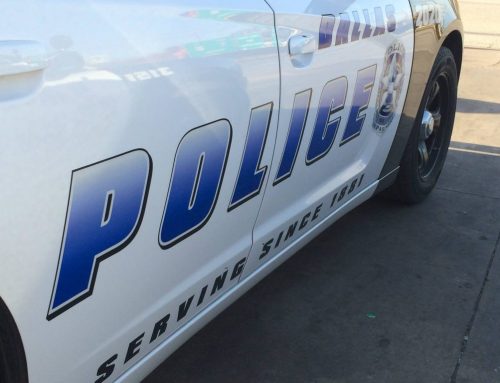You’ve seen him. Sitting atop his motorcycle on Skillman just north of Mockingbird, hiding behind a house, pointing his radar gun at southbound traffic. This spot and others in our neighborhood are commonly known as “speed traps.” So how do officers pick ’em? And are quotas really just a myth?
How are “speed traps” chosen?
We choose traffic enforcement locations based on quite a number of things, actually — complaints from citizens, high accident locations, and areas where we’re having a lot of crime, because if you’ve got somebody violating a traffic law, that’s probable cause to stop them and find out what’s going on.
We get a lot of our wanted people that way. Another way we choose them is if we’re having a lot of issues, like in the school zones when school starts back up to remind people to pay attention and slow down.
We can have our patrol officers do traffic enforcement for some areas, but we call on our traffic enforcement officers for broader enforcement. Those are our motorcycle officers, the ones with red tabs on their shoulder. Sometimes we don’t even know where they’re at in our division unless we see them out there.
Is an officer who wants to catch traffic violators more likely to stake out a convenient hiding place?
Obviously, like anything, you’re going to catch more people when they don’t see you because when they see you, they’re going to quit doing whatever what they’re doing wrong. But it may not be necessarily hiding in the bushes, so to speak. They may be on the side of the road doing regulatory checks — registration, driver’s license, inspection sticker, seatbelts, those kinds of things.
Where are the most common places in our neighborhood that officers position themselves to catch traffic law violators?
If we’re having a lot of accidents in one place all of a sudden, we’re going to ask our officers to run some enforcement up there, or a lot of crime in a certain area to catch some of our criminals. So it moves. There are some places it will keep popping up all the time — school zones or some of your busy intersections where people run lights. Those are chronic.
Are quotas a reality, or is the suspicion of officers aiming radar guns more often at the end of the month just a myth?
No, there are no quotas, but that’s a suspicion we hear all the time when our officers write tickets — “Why aren’t you chasing the real bad guys? You’re just filling quotas” — and as I mentioned earlier, that is how we catch a lot of bad guys, and it’s also a safety thing. We don’t want people getting injured or hurt or killed out there, and traffic enforcement is a way to remind people to wear seatbelts, slow down, stop at red lights.
Where do you think that suspicion comes from?
Obviously, tickets do generate revenue, they do that in every city, and nobody likes getting a ticket. I really don’t know where that comes from, especially for the patrol officers. Traffic enforcement is part of their job, but it’s not their main function. They are also judged on how many felony arrests they make, so it’s not like you have to have X number of traffic tickets and X number of felony arrests. It’s a measure of all of that in totality, but there’s not a specific number of each one of those things that they have to get each month.
What about when officers speed (and not the “flashing lights and sirens” kind of speeding)? Is that against the law, or are they above the speeding laws?
No, officers are not above the law. When you see the red lights and hear the sirens, it gives us authority to drive contrary to the regulatory codes, but the officers still have to exercise care and due diligence. That is really a dangerous thing, and that’s why our pursuit policy is so strict. But no, we are under the same laws as everybody else for everything.





